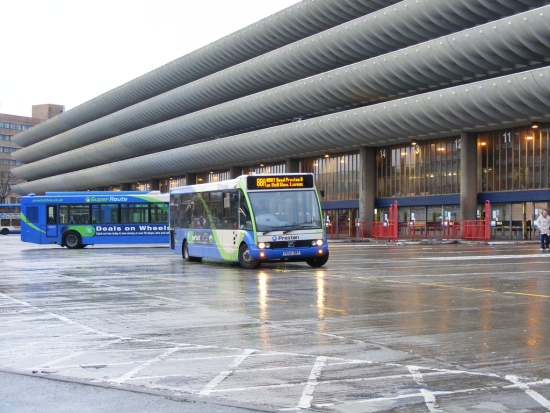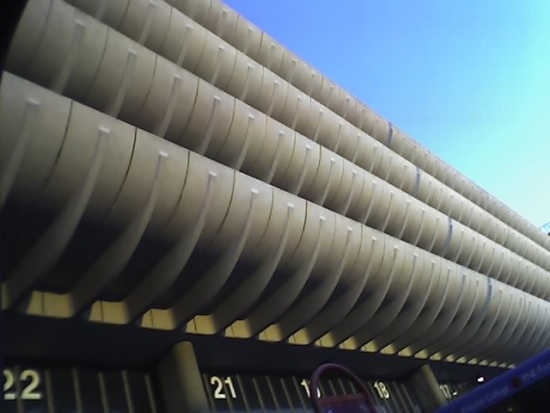Campaigners are celebrating this week after Preston bus station was among a clutch of post-war buildings granted Grade II protected listing status. The move, by culture minister Ed Vaizey, ends months of uncertainty surrounding the transport terminal that the council is seeking to reduce to rubble. But what does the future hold for the enormous Brutalist structure that so sharply divides opinion?

This week’s additions to the protected buildings list, which also includes a warehouse in Swindon and an electricity substation in Sheffield, are certain to lead to raised eyebrows among critics of mid-twentieth century architecture. But, what to some, are grey concrete eyesores are to others heroic monuments to an era of utopian urban planning.
This is the third time that supporters of Preston bus station have sought to get the building listed and, given the council’s determination to demolish it, this was possibly the last chance to secure its future. Fortunately, for English Heritage and the Twentieth Century Society, on this occasion the minister shared their enthusiasm, describing it as a ‘remarkably good example of integrated 1960s traffic planning.’
“The fitting out of the building survives well with original features such as floor finishes, signage and barriers making an important contribution to its aesthetic impact. I am very happy to end the uncertainty around the future of this building,” Vaizey said.
Preston Council leader Peter Rankin responded by saying that the listing was not entirely unexpected given Vaizey’s previously stated appreciation of British Brutalism, but he confessed to being very disappointed nevertheless. He says that the council will now have to consider its options in light of the decision.
Now that the bus station has been granted listed status it makes it more difficult for the local authority to knock it down, but it remains a possibility. Whether the council would wish to present a case for the demolition of a building that has been declared of national importance, remains to be seen but its jubilant supporters hope they will now accept Vaizey’s decision and look to the future.
Campaigner John Wilson told the Lancashire Evening Post that the ruling was ‘fantastic news’ but warned there is still much to be done.
“We have got to convince Preston Council to think the way English Heritage think. They have got to take a positive attitude to it and take the advice of professionals – the people who know about buildings.
“This opens up the doors now for heritage lottery funding and Ed Vaizey has said there are billions of pounds in there.
“Preston Council have got to take a positive line and say ‘we’re going to save this building, redevelop it and save it for the people of Preston’ and not take a negative view and look to get a certificate to demolish a listed building,” he said.

But what might that redevelopment involve? The council claim the bus station is too big and costs too much to maintain. Their intention was replace it with a smaller terminal paid for by Lancashire County Council.
Now that it has listed status the money for refurbishment and maintenance may be easier to obtain and by taking an imaginative approach the council could breathe new life into the building.
In March, local businessman Simon Rigby made an offer to buy the building from the council and pledged to invest £500,000 a year into the property over the next ten years. Describing it as a ‘cool place’ he planned to maintain its function as a transport terminal but to add a commercial element in the form of shops, artists’ studios and units for business start-ups.
Perhaps now, if Preston Council take the positive attitude John Wilson urges them to take, something along these lines could bring a dramatic example of post-war architecture into greater use and prove to be beneficial both to the community and to the local economy.
Previous Post
Arcadia to open 28 US Stores in 28 Days